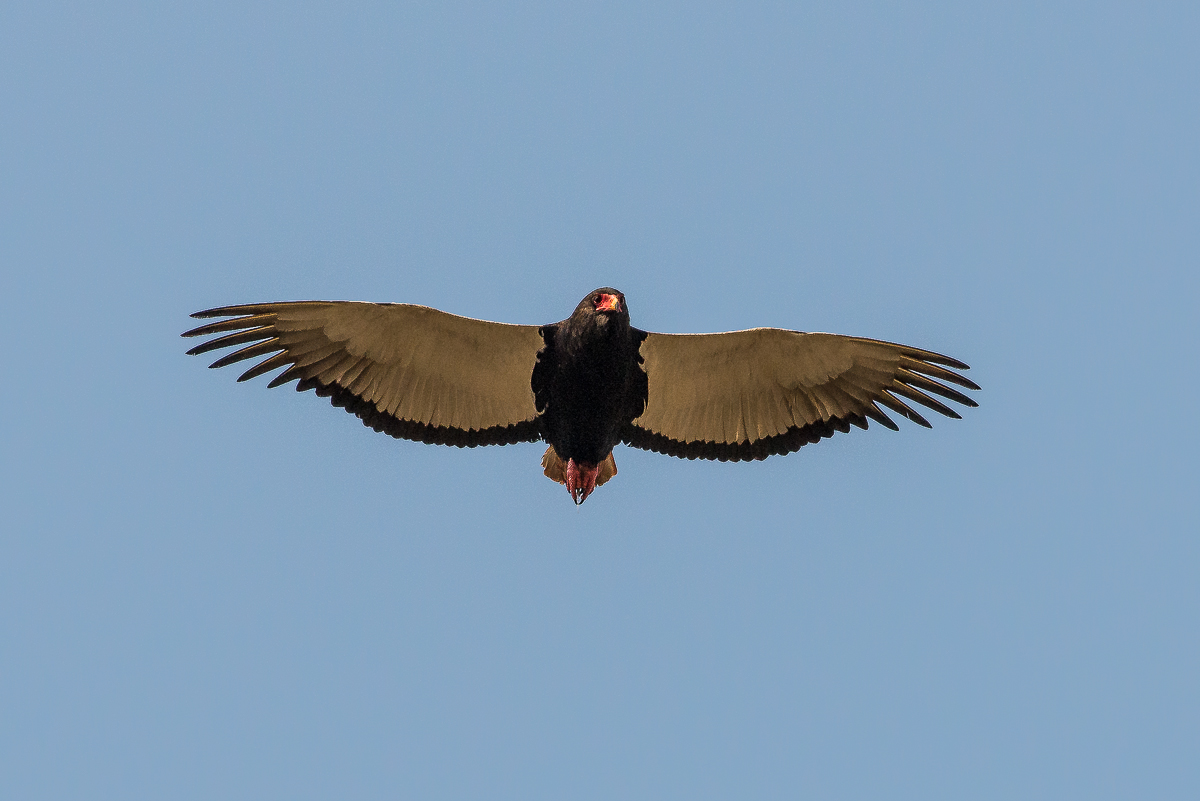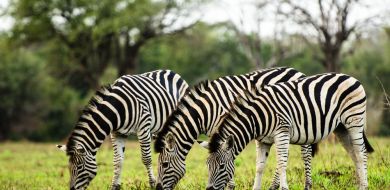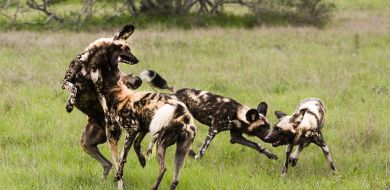Sabi Sabi Wild Facts: Bateleur
on Dec 13, 2014The Bateleur, a true bird of prey, is part of the bird family Accipitridae. Other raptors in this family include kites, buzzards and harriers. Its scientific name,Terathopius ecaudatus, when translated literally from both Latin and Greek, means " marvellous face, no tail."
This eagle is spectacularly beautiful, with glossy black feathers, a red face and legs, and a black beak. The upper wings are tawny, while the feathering under the wings is black and white. This black and white patterning makes it possible to identify whether a mature bateleur flying overhead is a male or a female, as the male of the species has a broad, black band under its wings, with the female having mainly white feathers with only a small strip of black.

The name Bateleur means "tight-rope walker" in French. This aptly describes its distinctive, erratic and unstable manner of flying; the rocking flight motion very much mimics the side-to-side movement of a tight rope walker maintaining his balance. The species also demonstrates some spectacular aerial displays, particularly during courtship.
The Bateleur is a snake eagle, with the rufous coloured juvenile often mistaken for a brown snake eagle. It takes approximately 8 years for the young bird to attain its full adult plumage. Even in flight the juvenile is not easily identifiable, as the immature bateleur has long tail feathers, with the tail becoming shorter with each moulting. By the time it fully matures, the bateleur will have acquired its ridiculously short tail.

The Bateleur is both a hunter and a scavenger. It preys on birds and reptiles, and can fly for as much as eight hours at a time searching for live food or carrion.
Bateleurs pair for life, and may use the same nest for many years. The female, which is larger than the male, lays a single egg. The fledgling remains in the vicinity of the nest for several months after it hatches.
The Bateleur is unfortunately in severe decline, and in South Africa is now seldom seen outside of the game reserves of the Kalahari and those in the northern part of the country. At Sabi Sabi we are still privileged to be able to view this endangered species in the wild, hunting, breeding and surviving in its pristine bushveld habitat.






